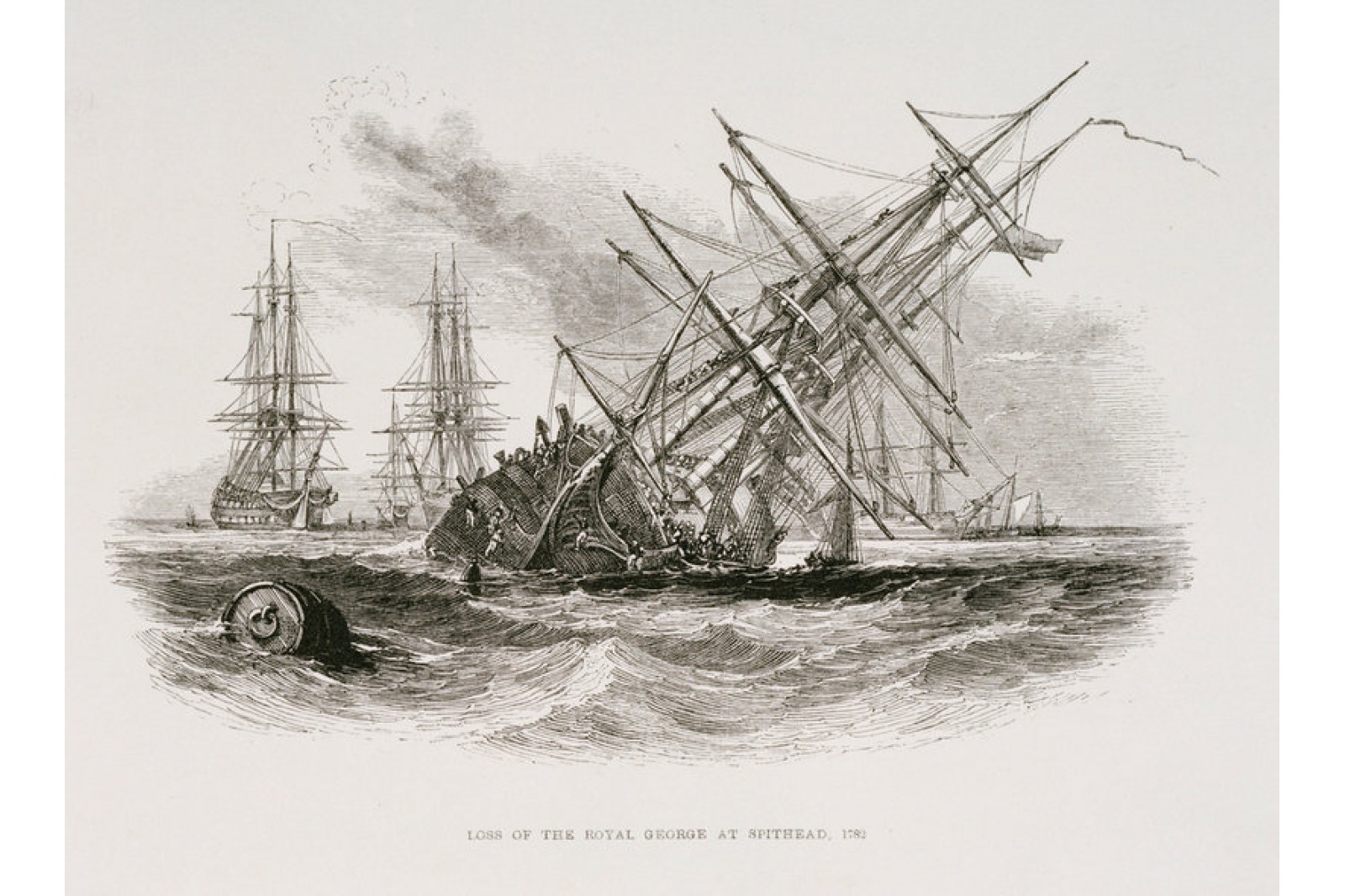
Online collections
monedastodas.com
All collections » Tokens » Deptford Halfpenny
Meeting of the Kentish
Warriors and William the Conqueror /
Stern
of HMS Royal George

On the obverse, William the Conqueror (William I the Conqueror 1027/28-1087) is depicted seated on horseback in armor, approaching four armed Kentish warriors. Below the image is the date "1067". Circular legend: KENTISH LIBERTY PRESERVED BY VIRTUE AND COURAGE.
According to legend, shortly after the Battle of Hastings, in which the men of Kent formed the vanguard of Harold's army, William the Conqueror entered Kent and was met by the Kentish forces at Swanscombe, led by the abbot of St Augustine; each carried a branch of a tree, so that from the side they looked like a moving forest, but when they met with Wilhelm, they showed themselves fully armed, discarding the branches. The abbot assured the King that they had come to him to represent the county, but in turn demanded that their ancient laws and privileges be preserved, which were kindly granted to them.
The reverse side depicts the stern of HMS Royal George. Circular legend: PROSPERITY TO THE WOODEN WALLS OF OLD ENGLAND.
Under the stern image are the initials of the TDH issuer, Thomas Haycraft, who was an ironmonger in Deptford, although the second version of the edge inscription mentions Chatham and Dover, which are also port cities. Shown from an unusual angle, the stern of the ship may indicate that Thomas Hayncraft was engaged in the supply of lanterns and other ship accessories for the British Navy.
 Loss
of the HMS 'Royal George' at Spithead, 29 August 1782
Loss
of the HMS 'Royal George' at Spithead, 29 August 1782The depiction of the Royal George commemorates the disaster at Spithead Harbor in 1782. Anchored under the flag of Rear Admiral Richard Kempenfeldt (Richard Kempenfelt 1718-1782), the ship was being prepared for a trip to Gibraltar, having rolled to the port side with the help of cargo displacement for work on the underwater part. From receiving supplies on the same side, water entered and accumulated on the deck, as a result of which the ship lost stability, capsized and sank. More than 900 people perished along with the ship, including the rear admiral working in his cabin.
In the official version, adopted by the naval commission immediately after the death of the ship, the cause of the disaster was rotting of the hull (dry rot), and, as a result, a catastrophic loss of strength during heeling.
The stern of the 100-gun ship depicted on the token belongs to the fifth ship, named HMS Royal George (1788-1822) in honor of the George kings of the Hanoverian dynasty.